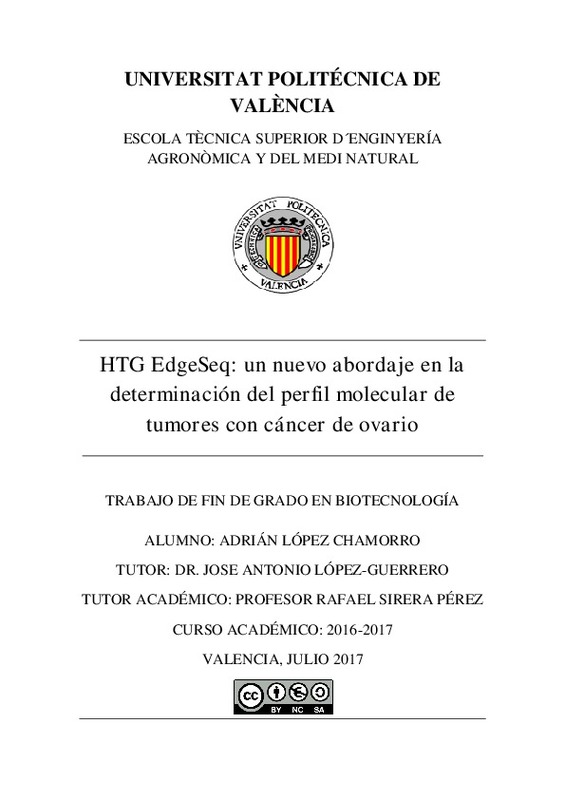JavaScript is disabled for your browser. Some features of this site may not work without it.
Buscar en RiuNet
Listar
Mi cuenta
Estadísticas
Ayuda RiuNet
Admin. UPV
HTG EdgeSeq: un nuevo abordaje en la determinación del perfil molecular de tumores de cáncer de ovario
Mostrar el registro completo del ítem
López Chamorro, A. (2017). HTG EdgeSeq: un nuevo abordaje en la determinación del perfil molecular de tumores de cáncer de ovario. http://hdl.handle.net/10251/88169
Por favor, use este identificador para citar o enlazar este ítem: http://hdl.handle.net/10251/88169
Ficheros en el ítem
Metadatos del ítem
| Título: | HTG EdgeSeq: un nuevo abordaje en la determinación del perfil molecular de tumores de cáncer de ovario | |||
| Autor: | López Chamorro, Adrián | |||
| Director(es): | López Guerrero, José Antonio | |||
| Entidad UPV: |
|
|||
| Fecha acto/lectura: |
|
|||
| Resumen: |
[ES] Con el objetivo de ampliar nuestro conocimiento en la comprensión de una
enfermedad tan compleja y heterogénea como es el cáncer de ovario, se propone el uso
de una nueva tecnología genómica, el HTG EdgeSeq, en la ...[+]
[EN] In order to expand our knowledge in the understanding of a complex and
heterogeneous disease such as ovarian cancer, we propose the use of a new genomic
technology, the HTG EdgeSeq, in the determination of the ...[+]
|
|||
| Palabras clave: |
|
|||
| Derechos de uso: | Reconocimiento - No comercial - Compartir igual (by-nc-sa) | |||
| Editorial: |
|
|||
| Titulación: |
|
|||
| Tipo: |
|
recommendations
Este ítem aparece en la(s) siguiente(s) colección(ones)
-
ETSIAMN - Trabajos académicos [3541]
Escuela Técnica Superior de Ingeniería Agronómica y del Medio Natural







